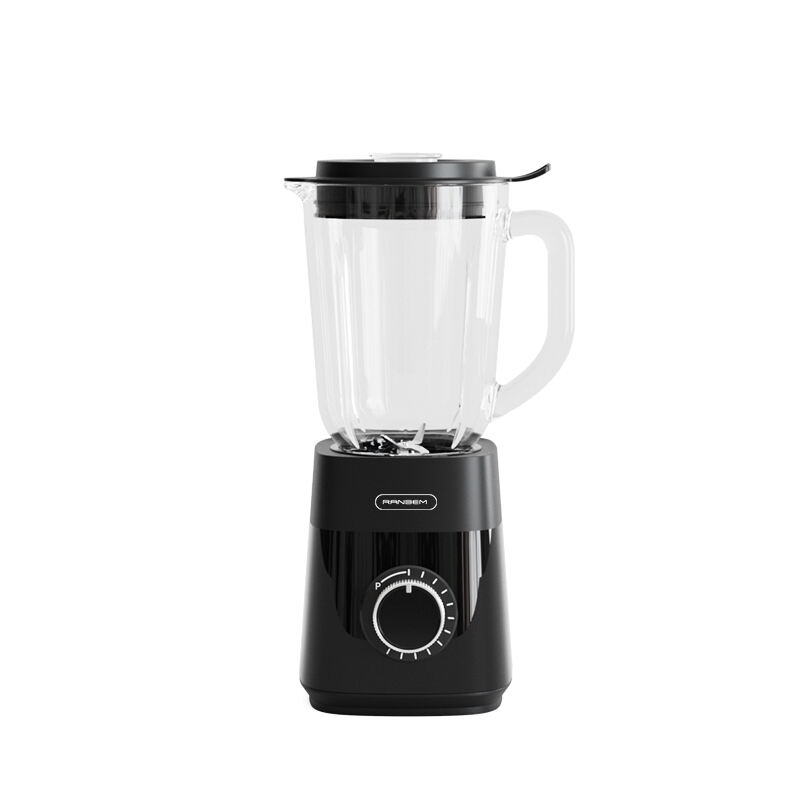Новини
Виготовники орехового молока: Стійкий альтернативний вибір молоку
Екологічне обґрунтування для виготовників орехового молока
Молочне vs Рослинне молоко: Углеродний слід
Екологічний вплив молочного господарства значний через велику кількість викидів вуглецю, головним чином через метан, що виробляють корови. Метан - це потужний парниковий газ, який суттєво сприяє зміні клімату. Дослідження показують, що молоко генерує приблизно у три рази більше викидів парникових газів, ніж рослинне молоко. Наприклад, за даними Групи з питань екологічної роботи, вуглецевий слід виробництва літра корів'ячого молока набагато вищий, ніж в утворів на основі орехів. Порівнюючи ці дані, видно, що виробництво молока з орехів демонструє значне зменшення викидів вуглецю, що робить його більш тривійним вибором. Цей перехід від молочних продуктів до рослинних альтернатив є необхідним, коли ми шукаємо способів зменшити наш екологічний вплив.
Переваги захисту води
Щодо використання води, молочне господарство відоме своєю високою вимогою. Витрачаючи від двох до двадцяти разів більше води, ніж у випадку виробництва рослинного молока, молочне господарство поглибляє проблеми недостатку води. Виробництво орехового молока значно зменшує цю навантаженість. Наприклад, грецькі орехи, незважаючи на те, що вони вимагають багато води серед інших орехів, все ж таки вимагають менше води, ніж корови для молочного виробництва. У контексті зростаючої свідомості про захист водних ресурсів, важливо визнати екологічні переваги вибору орехового молока. Умовами зміни клімату, зменшення використання води в сільському господарстві є необхідним для стабільного розвитку, і орехове молоко пропонує practicable рішення.
Ефективність використання землі у порівнянні з молочним господарством
Потребність у землі для виробництва молока далеко перевищує потрібну для виробництва орехового молока. Молочні ферми потребують величезних територій для випасання і годування корів, тоді як орехові дерева, такі як горіхи або макадамія, займають набагато меншу площу. Такий рівень ефективності використання землі є ключовим для зменшення нашого екологічного впливу. За даними сельськогосподарських досліджень ФАО, орехове молоко можна виробляти на частині тієї землі, яка потрібна для молочного виробництва, що підкреслює значне зменшення використання ресурсів. Перейшовши до орехового молока, ми не тільки захищаємо землю, але й забезпечуємо більш ефективні сільськогосподарські практики, вирівнюючись з цілями стійкого розвитку.
Основні особливості сучасних пристроїв для приготування орехового молока
Розглянемо питання ємності для домашнього використання
Обираючи пристрій для виготовлення орехового молока для домашнього використання, потрібно враховувати ємність. Малі харчові господарства можуть знайти ємність близько 1 літра достатньою, що може виготовити достатньо молока для щоденного споживання без втрат. З іншого боку, більші сім'ї можливо потребують моделі, яка розрахована на 1,5 літра або більше, щоб задовольнити свої потреби. Моделі, такі як ChefWave Milkmade, відомі різноманітністю їхніх ємностей, надають гнучкість для різних об'ємів порцій, що задовольняє потреби як маленьких, так і великих сімей. За відгуками користувачів, багато хто цінує зручність мати змогу виготовляти молоко у кастомних об'ємах, що підкреслює важливість вибору правильної ємності.
Напередперевірені методи екстракції для максимальної видачі
Сучасні виробники орехового молока використовують передові технології екстракції, які значно збільшують виробництво молока. Техніки, такі як ензимна екстракція та високоскоростне перемішування, забезпечують повну розщеплення орехів, витягуючи максимальну кількість нутрієнтів і смаків. Наприклад, пристрій Nutramilk інтегрує високоскоростне перемішування для підвищення ефективності, зберігаючи багатий кремовий смак молока. За даними експертів, ці технології підвищують виробництво на 30% у порівнянні з традиційними методами, надаючи більше користі при кожній партії. Такі досягнення підтримуються науковими оцінками, що гарантує споживачам найкращу якість та кількість молока.
Багатofункціональні можливості: Від кокосового до рисового молока
Універсальність сучасних апаратів для виготовлення орехового молока є перетворювачем ігор, дозволяючи користувачам готувати різноманітні види молока, включаючи кокосове та рисове. Ці машини здатні робити більше, ніж просто орехове молоко; вони також можуть підготувати смуги, супи та орехову муку. Наприклад, деякі моделі мають налаштування для виготовлення кокосового молока або рисової молочної муки, що розширює їх функціональність на кухні. Ця багатофункціональна використання дуже приваблива для споживачів, які шукають ефективні прилади, які економлять місце та час. Відгуки свідчать, що змога перемикатися між різними видами підготовки їжі та напоїв покращує задоволеність користувачів, підтверджуючи думку, що хороший апарат для виготовлення орехового молока - це більше, ніж просто інструмент одного призначення.
Екологічні Рішення для Кухні: Топ Апаратів для Орехового Молока
Блендер Table Blender TB002: Високопotentальна Обробка
The Міксер для столу TB002 є потужним пристроєм для переробки орехового молока, маючи вражливих 1200W потужності. Цей високопродуктивний блендер забезпечує ефективне приготування орехового молока, здатний легко обробляти різні види орехів. Його об'єм 1,5 л та міцний мотор з мідю на 7625 обертів, що працює на швидкостях від 20 000 об/хв до 24 000 об/хв, роблять його дуже придатним як для домашнього використання, так і для маломасштабного виробництва орехового молока. Потрібники цінують корисний механічний кручений контроль та міцне будову, що включає склянну банку та нержавіючу сталеву клинку з марки 304. Відгуки відображають високий рівень задоволеності щодо його продуктивності та вартості, хвалуючи його здатність доставляти гладке та кремове орехове молоко ефективно.
Створювач Орехового Молока 1616G: Струмлінований Дизайн
Апарат для приготування орехового молока 1616G видається своїм елегантним і компактним дизайном, ідеальним для сучасних кухонь, де вартують як естетика, так і функціональність. Покупці вишукують простоту очищення та експлуатації, що робить його популярним вибором для тих, хто пріоритетує зручність. Навіть якщо окремі унікальні функції не рекламуються широко, стрімкий дизайн моделі відрізняє її, роблячи додатком до будь-якої кухні, який є як функціональним, так і стильним.
Виробник орехового молока 769S: Комерційна продуктивність
The Апарат для приготування орехового молока 769S створений для тих, кому потрібне рішення комерційного класу, що відповідає потребам як домашнього, так і малого бізнесу. Він пропонує надійну продукцію, здатну до високовolumної виробництва оршового молока завдяки своїм потужним компонентам та дизайну. Відгуки від комерційних користувачів підкреслюють його ефективність та здатність регулярно виробляти високоякісне оршове молоко, роблячи його цінним активом для користувачів, які шукають надійність та результати комерційного рівня.
За межами фундуку: універсальні опції рослинного молока
Адаптація машини для виробництва кокосового молока
Зростання популярності кокосового молока як популярної рослинної альтернативи стимулювало розробку спеціалізованих машин для доїння кокосів. Ці пристрої використовують передові технології для ефективного вилучення молока з кокосів, що відрізняє їх від традиційного виробництва горіхового молока. Хоча виробництво горіхового молока часто передбачає подрібнення та проціджування, машини для доїння кокосів зосереджені на дрібному подрібненні м'якоті для вивільнення її насиченого молока. В результаті отримується кремовий, ароматний продукт, який подобається багатьом споживачам за його тропічний смак та ніжну текстуру. Високі очікування щодо консистенції та якості роблять ці адаптації важливими для задоволення попиту споживачів на високоякісну кокосову молочну масу.
Могутність Рисової Молочної Мельниці
Млинки для рисового молока виявили свою нишу у промисловості рослинного молока, пропонуючи можливості, які спеціально адаптовані для виробництва рисового молока. Процес полягає у замачуванні рисових зерен, а потім їх перемалюванні в тонку пасту, яка змішується з водою для витягування молока. Ці машини забезпечують максимальну ефективність та якість, підтримуючи точний контроль температури та консистенції переминання, що критично для збереження нюансових смаків та харчових властивостей рисового молока. Ринкові тенденції свідчать про зростаючу перевагу рисового молока через його легкий смак та гіпоалергенні властивості, що задовольняють розрастаючу споживчу базу, яка шукає безалергенних альтернатив молоку.
Інноваційні комбінації зерна та насіння
Виробники орехового молока зараз розширюють свої інноваційні комбінації зернин та насін, виходячи за межі традиційних рослинних молок новими рецептами та смаками. З допомогою сумішування матеріалів, таких як кіноа, конопля й насін чія, вони створюють харчові й різноманітні варіанти рослинного молока. Ці зерна й насіння надають різні корисні властивості для здоров'я; наприклад, кіноа має високий рівень білка, тоді як насіння чія забезпечують omega-3 жирними кислотами. Популярні рецепти, такі як молоко з кіноа-чія або конопляне молоко, стають улюбленими споживачів, задовольняючи потреби тих, хто шукає нутрієнтно багатих, смачних альтернатив молоку. Запит на ці різноманітні варіанти підкреслює тенденцію до персоналізованих дієтичних виборів у рослинній дієті.
Максимізація потенціалу вашого апарату для приготування орехового молока
Техніки замачування для оптимальної кремовості
Щоб досягнути найбагатшої і найкремовішої консистенції у молочі з орехів, використання правильних методів замачування є критичним. Замачування орехів розм’якає їхню текстуру, що сприяє легшому перемишуванню та дає більш гладку консистенцію молока. Зазвичай, більшість орехів потрібно замачувати приблизно 6-8 годин або навіть на ніч. Ось простий підхід: 1. Прополощіть орехи під прохолодною водою. 2. Покладіть їх у миску і залейте водою. 3. Дайте їм замочитися протягом вказаного часу, а потім відкиньте й промийте їх знову.
Користувачі часто повідомляють про покращену текстуру та смак після замачування, зазначаючи значну різницю у кремовості та загальному якості смaku молока. Процес замачування допомагає розкласти фітічну кислоту, що не тільки поліпшує переварюваність, але й вивільшує корисні питомі.
Зменшення відходів: Ідеї переробки пульпу
Замість того, щоб викидати залишкову орехову ботву після виробництва орехового молока, розгляньте можливість її повторного використання для зменшення відходів. Ботву можна креативно використовувати у різних рецептах, отримуючи нутріційну користь і зменшуючи вплив на середовище. Популярні варіанти включать: 1. Перетворення її у смачні додому приготовані крекери або енергетичні кулі. 2. Додавання її до смузі для отримання додаткової клітчатки та нутрієнтів. 3. Використання як основи для веганської выпечки чи котлет.
Ефективна переробка орехової ботви може значно зменшити відходи. Наприклад, використання ботви горіхів, обробленої машинами наподіб Almond Cow, може призвести до значного зменшення відходів від виробництва орехового молока, як видно з різних відгуків користувачів.
Розв'язки зберігання для збереження свіжості
Забезпечення свіжості самодільного орехового молока є важливим для насолодження його смаком та харчовими користями протягом часу. Оптимальні методи зберігання включають: 1. Використання герметичних посудин, найкраще скляних, щоб уникнути забруднення. 2. Негайне хранення в холодильнику після виготовлення та споживання протягом 3-5 днів. 3. Хороше перемешування молока перед кожним використанням, оскільки розшарування є природним явищем.
Дослідження організацій з безпечності їжі рекомендують ці методи, щоб уникнути портячості та зберегти якість молока. Рекомендації з хранення, такі як ці, не лише покращують смак, але й гарантує, що ви отримаєте всі корисні властивості своїх самодільних створень.












































